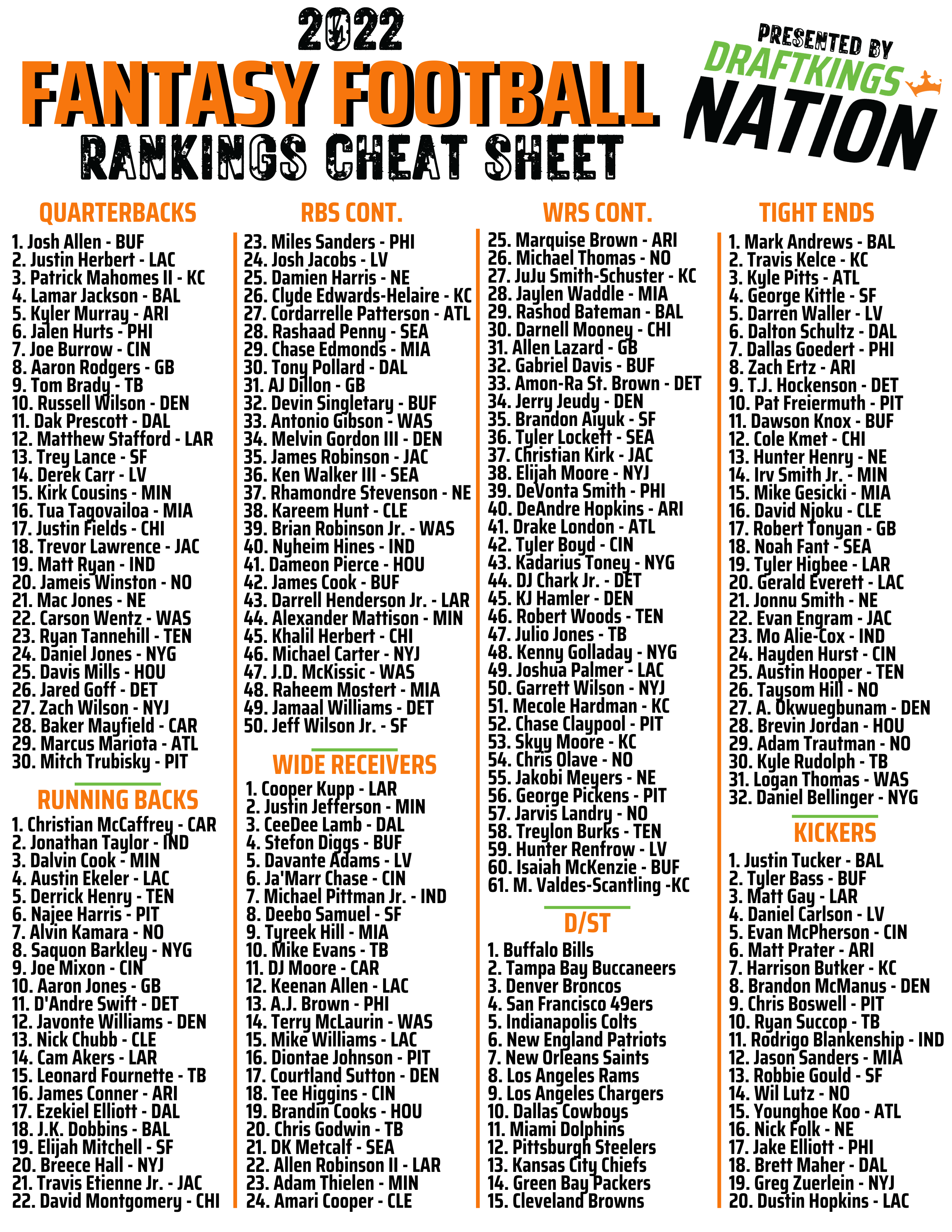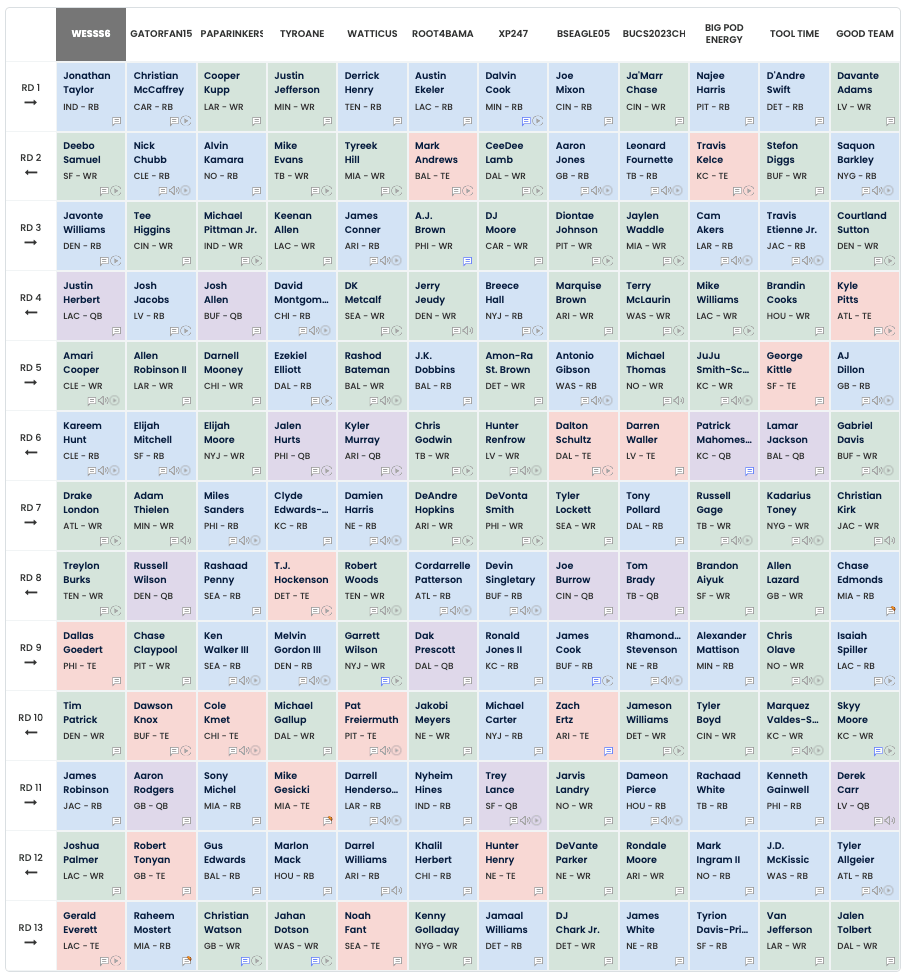Dominate Your Draft: Conquering the 6th Pick in PPR Fantasy Football
Drafting from the sixth spot in a PPR (Points Per Reception) fantasy football league presents a unique blend of opportunity and challenge. You're likely just outside the range of the elite, must-have players, but you're still in prime position to build a championship-caliber team. The key is understanding the nuances of PPR scoring and crafting a draft strategy that maximizes your point potential.
So, what's the best approach for the sixth pick in a PPR draft? Should you prioritize running backs, wide receivers, or perhaps even a top-tier tight end? This article will delve into the complexities of the sixth pick PPR strategy, offering insights, tips, and examples to help you navigate your draft and build a dominant fantasy football team.
Fantasy football, a game of skill and luck, has evolved significantly since its inception. While the core concept of drafting real NFL players and scoring points based on their performance remains, the introduction of PPR scoring added a new layer of strategy. PPR leagues reward players, primarily wide receivers and pass-catching running backs, for every reception they make. This shift has elevated the importance of certain players and drastically altered draft strategies.
The 6th pick strategy in PPR hinges on understanding which players offer the best value at that position. Historically, running backs have been the preferred choice early in drafts, but the rise of elite pass-catching backs and wide receivers has made the decision more complex. The main issue facing drafters at pick six is balancing the need for a reliable RB foundation with the potential upside of a high-volume receiver in PPR.
A successful 6th pick PPR strategy requires flexibility and adaptability. Pre-draft rankings are helpful, but being able to adjust your strategy based on the picks before you is crucial. For example, if the first five picks are all running backs, you might be presented with an opportunity to snag an elite wide receiver. Conversely, if several top receivers are off the board, securing a high-volume running back might be the optimal play.
One benefit of the sixth pick is the potential for a top-tier wide receiver. For example, a player like Justin Jefferson or Ja'Marr Chase could fall to you, offering a consistent source of points in PPR formats. Another advantage is the opportunity to secure a solid RB1, even if you miss out on the very top tier. A player like Austin Ekeler, known for his receiving prowess, can be a game-changer in PPR.
Creating an action plan is crucial for draft success. Start by researching player projections and rankings specifically tailored for PPR leagues. Then, identify your target players at various positions. Finally, be prepared to adjust your strategy based on the picks preceding yours. A successful example might involve targeting a top-tier wide receiver if available, or pivoting to a high-volume running back if the receiver landscape is depleted.
Advantages and Disadvantages of the 6th Pick in PPR
| Advantages | Disadvantages |
|---|---|
| Potential for a Top-Tier WR | Missing out on the very top elite players |
| Solid RB1 Options Still Available | Less predictability in player availability |
Best Practices for the 6th Pick in PPR:
1. Prioritize PPR Value: Target players who excel in receptions, not just yards and touchdowns.
2. Be Flexible: Don't be locked into a rigid strategy. Adapt based on how the draft unfolds.
3. Research Player Projections: Use reliable resources to gauge player performance in PPR formats.
4. Consider Roster Construction: Think about the balance of your team and how each pick contributes.
5. Don't Reach: Avoid drafting players too early just to fill a positional need.
Frequently Asked Questions:
1. Is the 6th pick a good spot in PPR? Yes, it offers a balance of opportunity and value.
2. Should I draft a RB or WR at pick 6 in PPR? It depends on the available players and your overall strategy.
3. Is it ever smart to draft a TE at pick 6 in PPR? Generally, no, unless an elite TE unexpectedly falls.
4. How important are pre-draft rankings? They are helpful but should not be followed blindly.
5. What resources can I use for PPR draft preparation? Websites like FantasyPros and ESPN offer valuable insights.
6. How does PPR scoring impact draft strategy? It elevates the value of pass-catching players.
7. What are some common mistakes to avoid at pick 6? Reaching for players and ignoring PPR value.
8. How can I adapt my strategy during the draft? Be flexible and willing to adjust based on available players.
Tips and Tricks:
Target running backs with a proven track record of receptions. Look for wide receivers who are consistently targeted in their respective offenses. Don't be afraid to take a chance on a high-upside player with a later-round pick.
Drafting from the 6th position in a PPR league presents a unique set of challenges and opportunities. Successfully navigating this pick requires a thorough understanding of PPR scoring, meticulous research, and the ability to adapt to the ever-changing dynamics of the draft. By prioritizing players with strong reception potential, remaining flexible in your approach, and utilizing resources like pre-draft rankings and player projections, you can maximize your chances of building a dominant fantasy football team. Embrace the challenge, make informed decisions, and watch your team climb to the top of the standings. The sixth pick isn't a curse; it's a chance to craft a winning roster and achieve fantasy football glory. Remember to analyze your league settings, consider the tendencies of your fellow drafters, and trust your instincts. Good luck, and may your draft be filled with PPR gold!
Lisa jon yancey jonesboro ar
Crafting victory exploring the top historic artisan decks in mtg arena
Score gta 4 on pc legit downloads avoiding scams










